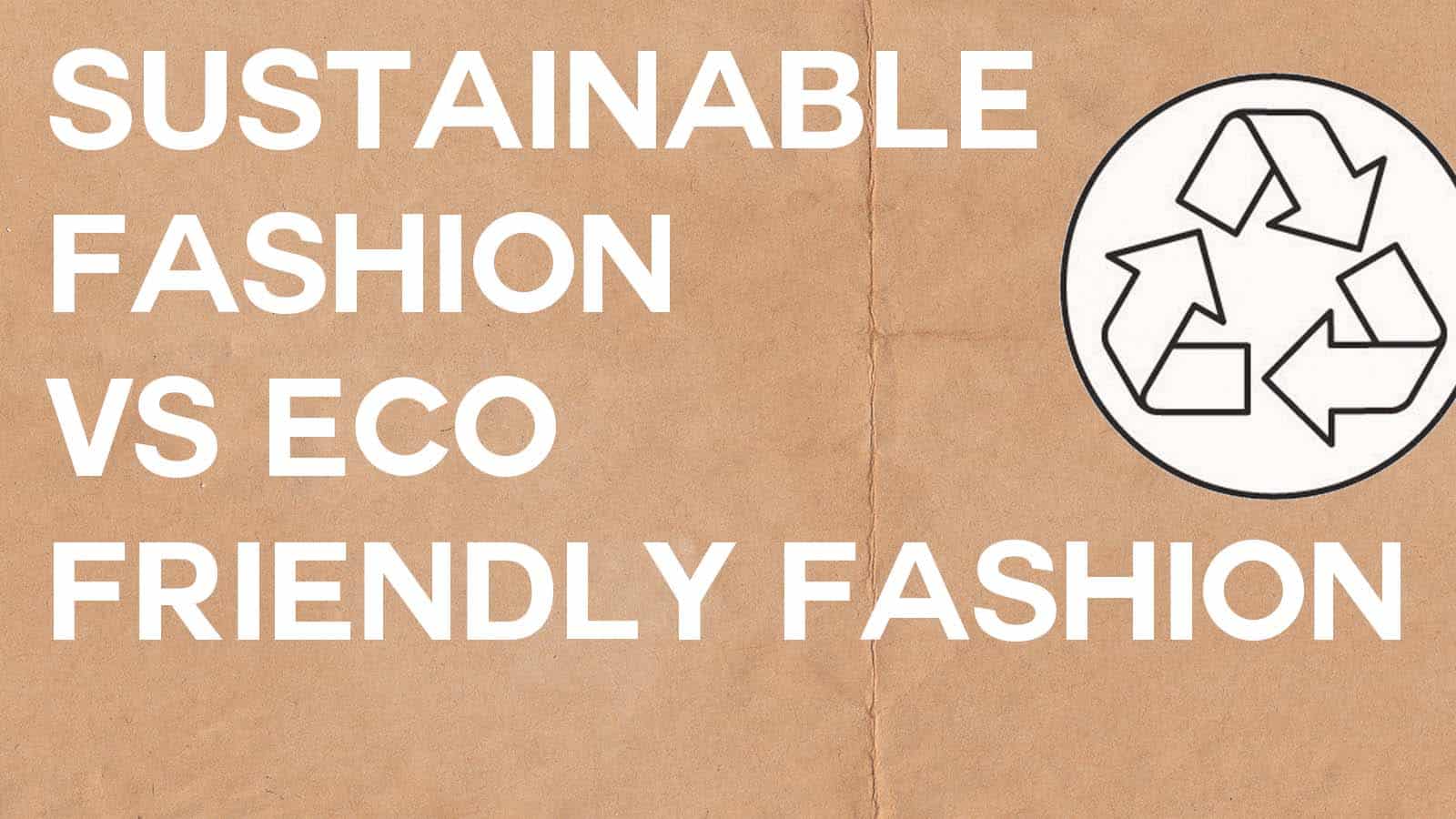Sustainable fashion vs. eco-friendly fashion, what’s the difference? Well, there is a lot to unpack.
This is a weird topic for me. Having at one point delved deep into environmentally friendly fashion and the theories that root it as such, only to find out that most of them are marking scams- I feel a bit lost.
So let’s delve deeper into what we can do to protect this earth for future generations and what efforts are better left behind.
First, we need to differentiate what sustainable fashion is versus environmentally conscious or friendly fashion. Imagine it like a Venn diagram… They are both individual items, and sometimes they have commonalities within the intersection. However sustainable fashion does not equal eco-conscious fashion and vice versa.
Fashion in its DNA is actually against the concept of sustainability. It is like almost every field out there- a consumption-based entity. And also- the factors that go into taking care of said clothing- washing, dry cleaning, replacing- keeps it from ever being on the top fields for eco-friendliness.
However, as a consumer, you have a choice and that can be to take a more sustainable approach to your wardrobe. Now, I am the first person to tell you that I love trends and trying new things. But to be sustainable it means investing into pieces that were made with accountability and that I know I can wear/use in multiple ways. IE – not buying a one and done item. Does this brand promote conditions for their workers and process that reflect my values and help sustain the world for the future?
The answer is not always a resounding no- but simple changes in the way we consume can make us more sustainable.
Environmentally conscious clothing. Now that is more from the brand’s perspective. It is a method they can use to create healthier and less impactful techniques on how they produce. Or it can be marketing gimmick that makes you feel like you check off the “I’m kind to the earth” box.
But some of these environmentally conscious techniques are equally if not more harmful than their original counterparts.
Buying Organic

Clothes wise- most people think if they buy organic cotton or jeans they are being sustainable and eco-conscious. However, organic cotton has not been genetically modified. Over the past decades, regular cotton has been genetically modified to have an extremely high yield per plant. Meaning one plant can produce quite a bit more than its organic counterpart. The non-organic plant requires about 290 gallons of water, the organic plant requires 660 gallons to produce the same amount. Now, some sustainable plants use rainwater, but that can be said about all cotton farmers. Rainfed cotton is obviously the most ideal form but there is no tracking system for this.. So that organic t-shirt you bought might have been a proponent of it, or it might have contributed to the Aral Sea drying up- it’s hard to know.
So don’t assume if you buy organic you are saving the earth. Consider if this is really an important element to your consumption practices, try reading the labels more carefully or checking out the brand’s website. If they truly commit to an environmentally friendly process they will want to tell you all about it.
Fast Fashion
Fast fashion has taken root in our society. Personally, I believe, because there is so much to be said for finding your style. Fast fashion allows you the opportunity to try different looks and discard the ones that don’t work, slowly helping you form your fashion identity. However, the key word there is discard. There is very little we can do about fast fashion as a whole. They make a lot of money and there is a need in the world for it currently… So instead of changing the system, or beating the man, attempt to be a bit more conscious shopper and find creative ways to avoid discarding.
My rule for fast fashion shopping is will I wear this item more than once? If the answer is no, I don’t I buy it. Contingent on my ability to see an item working in multiple ways- and on the spot, I can think of three or four different ways to style it I consider it worth the purchase. If for any reason that item goes out of style or I decide it didn’t work how I would imagine it- then it becomes a simple move of avoiding the landfill. Fashion textiles take up about 5% of our landfill, and that may not seem like a big number, but it is.
Fast fashion has to overproduce a lot of items in order to fill quantity needs (a piece of evidence to continue to support you can’t make fast fashion go away anytime soon).. However, these huge inventory runs sometimes end up in landfills. That is a major problem within their system. And I know one person donating or rehoming or reinvigorating their fast fashion piece will not make a world of difference.. But, one small effort can inspire others. And if you never try, it will only get worse.
My suggestions for what to do with your fast fashion pieces (if you don’t plan to keep them):
- Give them to a friend or family member who would love to have them.
- Donate them to a local shelter or charity.
- Call your local thrift store- if they can’t take the item they probably have a set up channel with a recycling company that can properly handle it.
- Contact the manufacturer- some accept their own clothing back to be recycled and reused ( H&M and Levi’s both do this). H&M will recycle any of your clothing for you- check out this program they have called
- Give it a new life. Programs like Blue Jean Go Green will take your old jeans and turn them into insulation. Nike Reuse a Shoe uses shoes to create basketball courts and playgrounds.
There are lots of small efforts you can make to be a proprietor of fashion and yet still be environmentally conscious.
For instance. Sustainable fashion can also be being more purposeful with your fashion purchases. It requires you to invest in pieces you love and will wear a million times over before you could ever part with it. I am not saying you have to have fashion staples, in fact, I have vehemently against a stapled wardrobe… However, investing in a piece you love is different. You can invest in a completely camp, neon sweater if you love it and will wear it a ton.
Buying pieces you will wear a lot, no matter if they fit the “ 10 items every closet needs” list or not, will help reduce the waste as well. The more money you spend on an item, the more value you attach to it, the more you strive to get a return. So instead of buying a $50 Zara shirt, splurge (when possible) on that item you’ve been lusting over and will wear the crap out of it. Wearing and loving your items is the best thing you can do for the fashion community and for the earth.
So, what is sustainable fashion?
Sustainable fashion is, as a whole, keeping in mind impact. How will this impact the earth, how was this created, and how will it impact my life to have or not have this item? Asking yourself these questions can make you a more sustainable fashion friend.
Eco-conscious fashion has to do with production practices. How was this item produced? For what purpose? For what intention? Was it made to sell millions and be discarded in two months? Will it last years to come? Did the brand attempt to produce this in the most earth-friendly method? Did they even try to consider the earth at all?
This is not an easy topic to tackle. It is not an easy shopping habit to form. But, I do believe asking yourself these questions, and beginning to delve deeper into the truest form of earth-friendly fashion will lead to slow, but meaningful changes.
[mc4wp_form id=”7172″]


